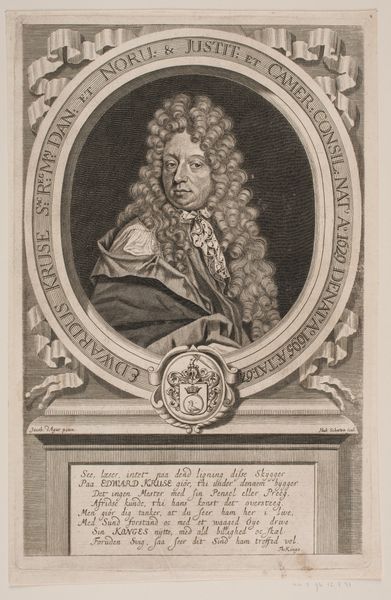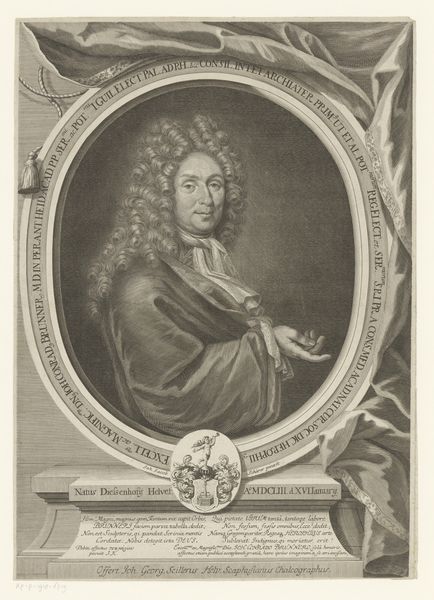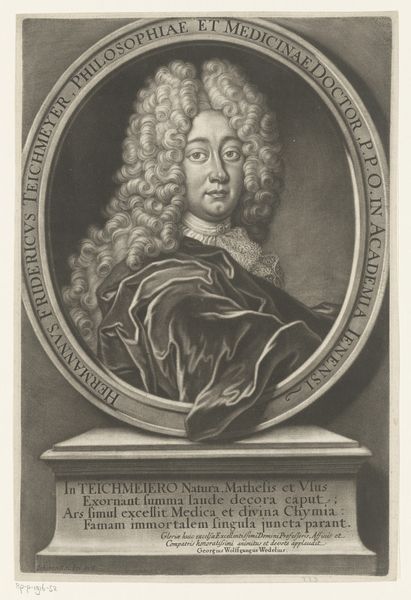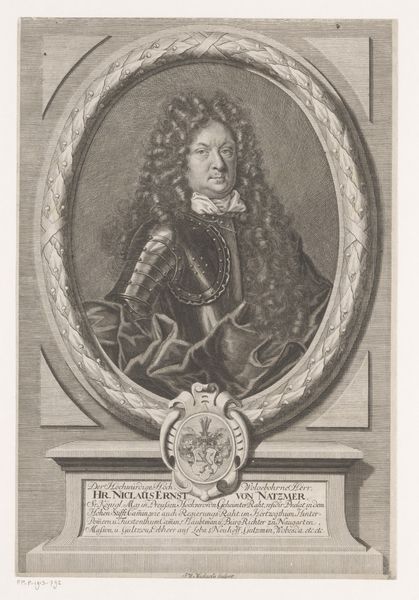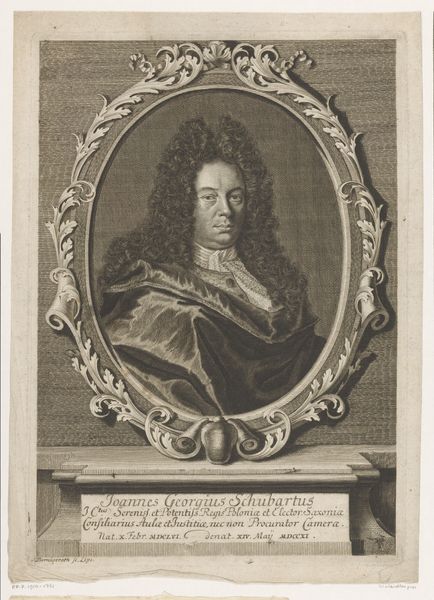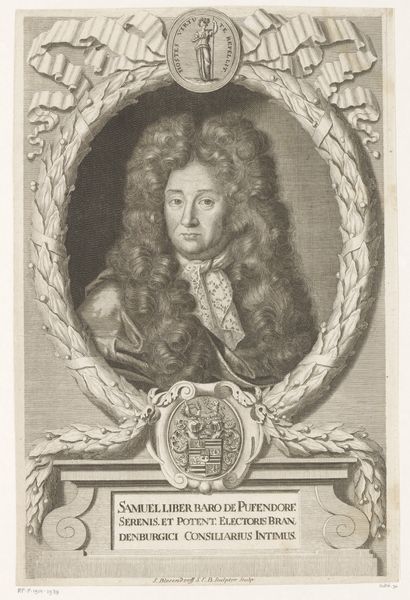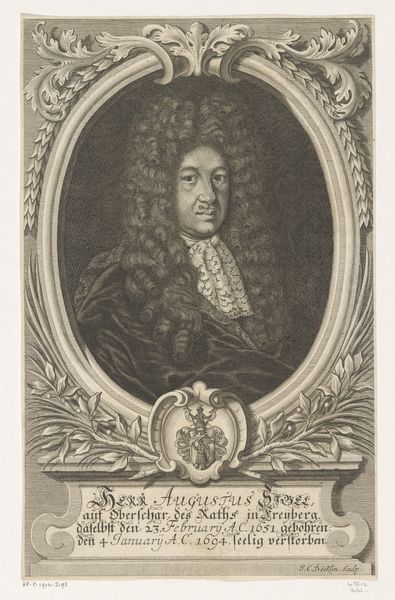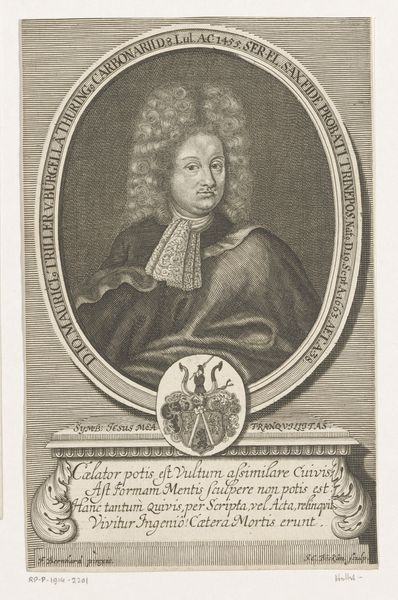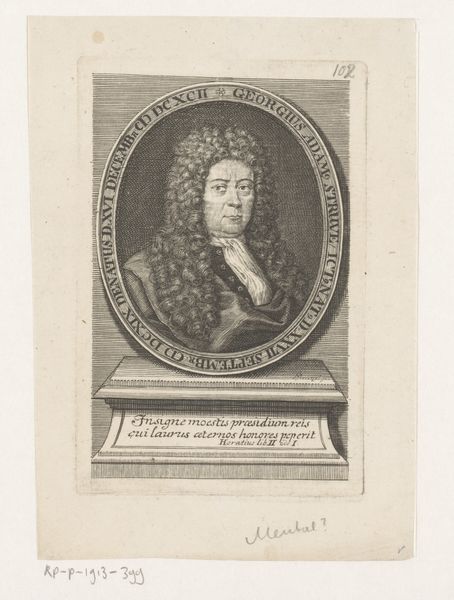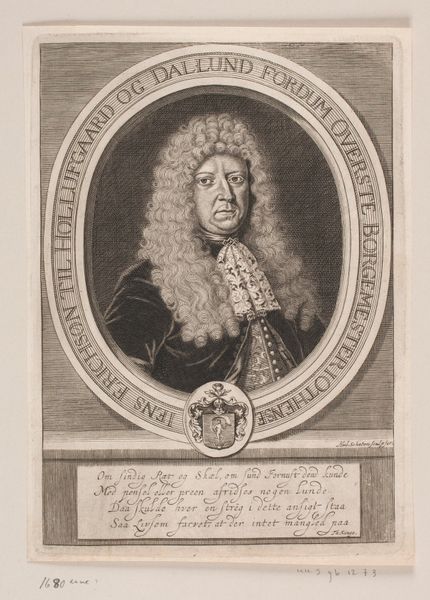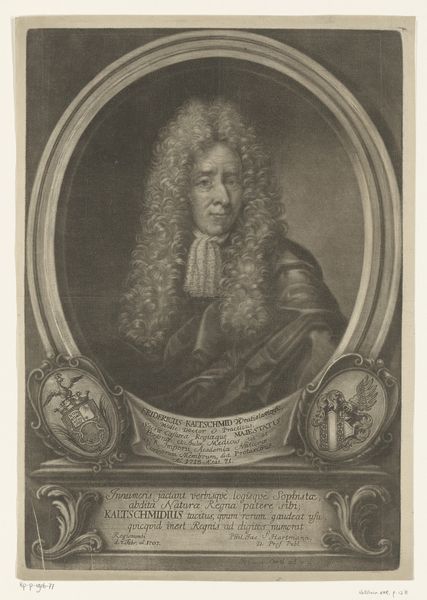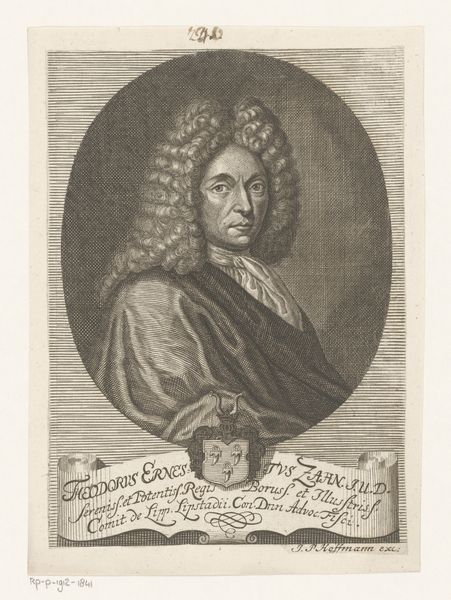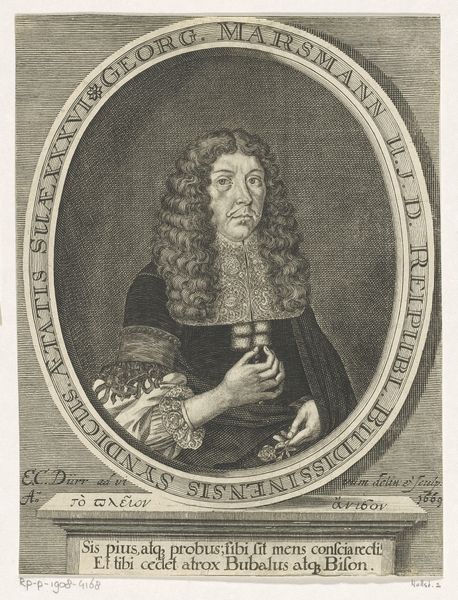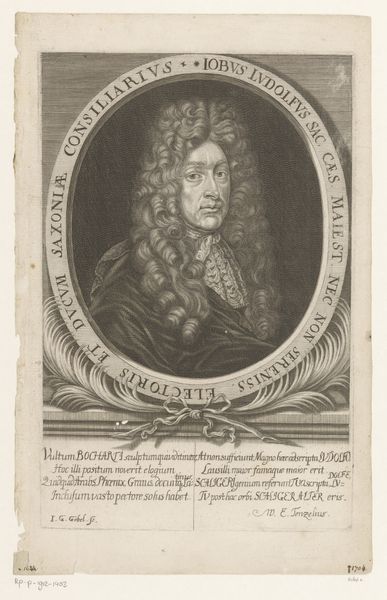
engraving
#
portrait
#
baroque
#
old engraving style
#
caricature
#
line
#
history-painting
#
academic-art
#
engraving
Dimensions: height 333 mm, width 207 mm
Copyright: Rijks Museum: Open Domain
Curator: What strikes me most is the sheer density of information packed into this portrait. Editor: And all rendered with the precision of an engraving! We’re looking at "Portret van Caspar Abraham von Schönberg" by Moritz Bodenehr, created in 1704. The work is part of the Rijksmuseum's collection. I’m immediately drawn to the dramatic contrasts, almost theatrical. Curator: Exactly. Let's look at the composition. The portrait is framed within an oval, set against what appears to be a landscape in the background. The figure is dominant, but the supporting details are far from mere afterthoughts. Editor: And look at the layers of symbolism. We have the architectural monument or obelisk to the left, then the very clear familial crest, anchoring the portrait… I want to know what narrative all these symbols create together! Curator: Semiotically, each of those elements contributes to constructing the sitter's identity. The obelisk, likely alluding to steadfastness or perhaps remembrance, the crest reinforcing his lineage, each adding to a rich articulation of rank. The baroque period’s taste for density—that "horror vacui"—is definitely on display. The figure’s wig seems like a baroque structural extension, artificially heightening the head! Editor: The sheer wig itself…that cascade of curls surely held potent symbolic value for status and power. Curator: Certainly. Consider the linearity as well. The lines that define his garments are so incredibly fine and precise, lending him weight but also somehow flattening him within the space. It is technically skillful, certainly. Editor: I find myself wondering about Von Schönberg himself. What sort of patron commissions a portrait brimming with such loaded visual cues? And what aspects of himself did he wish to project so definitively? I am reminded how, at the time, social identity was visually performed through such conventions! Curator: Yes, beyond pure likeness, such visual programs worked very strategically to project the self within a cultural sphere. We should bear in mind that this wasn’t simple documentation; the engraving actively participated in propagating an image of nobility. Editor: The detail present in Bodenehr’s engraving offers us more than just a depiction. It’s a dense record of status, constructed visually, according to codified symbols from the era. Fascinating! Curator: Absolutely. Considering its formal qualities offers a strong framework, as do considering the social forces visibly rendered.
Comments
No comments
Be the first to comment and join the conversation on the ultimate creative platform.
